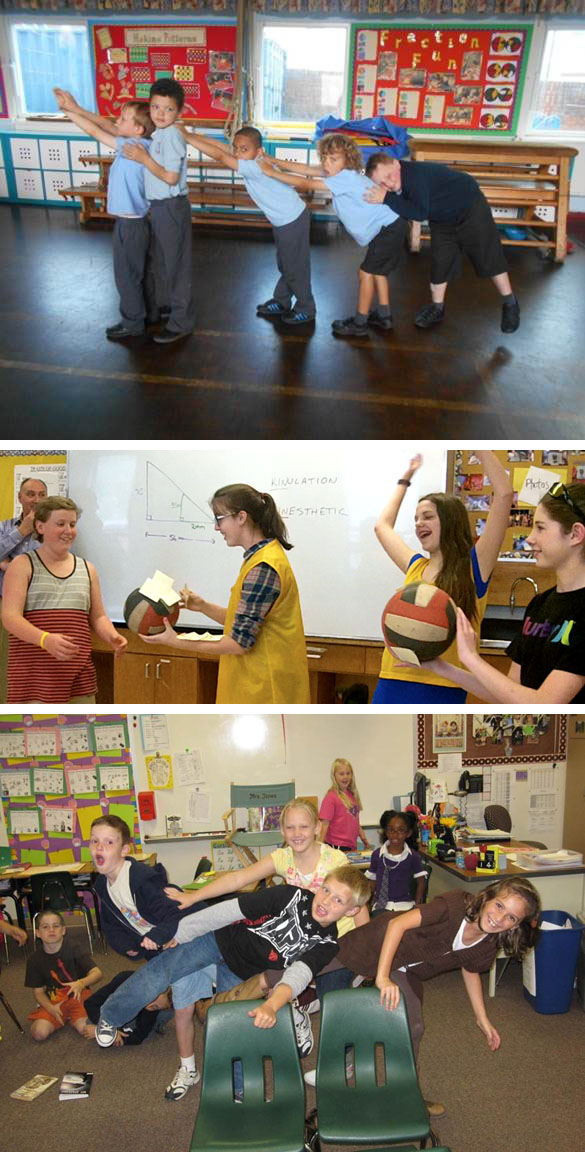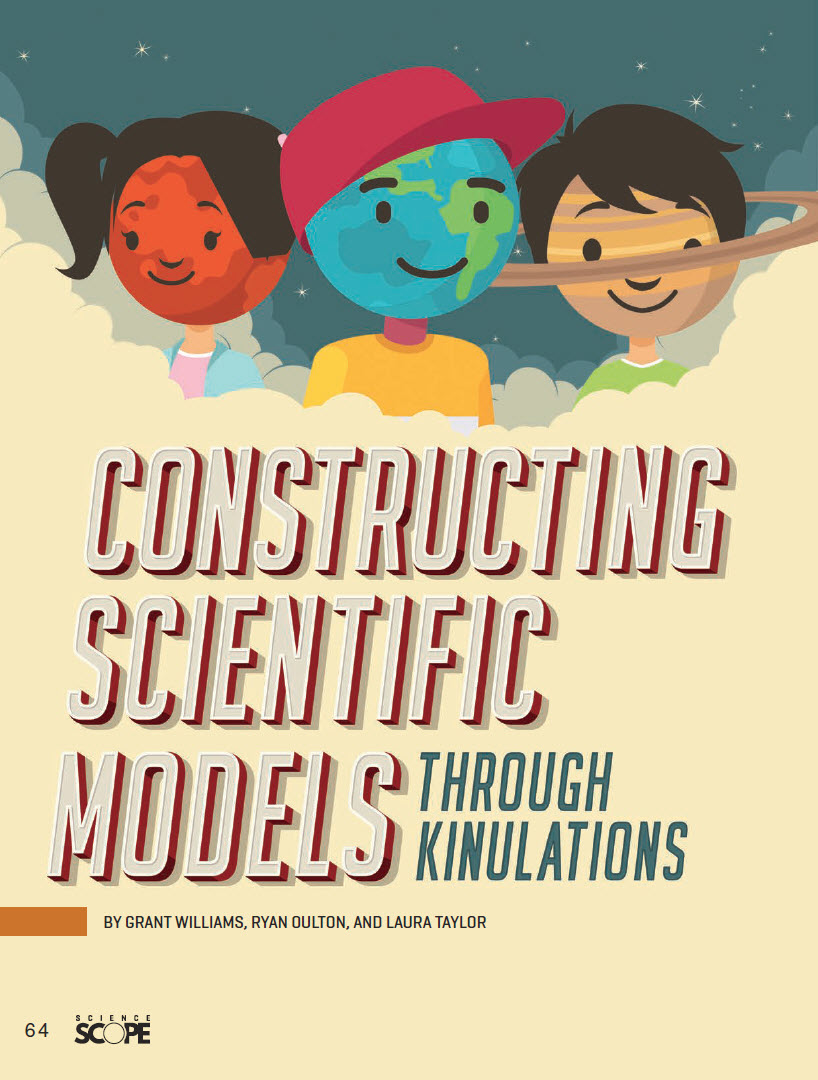What are Kinulations?
 Dr. Grant Williams coined the term KINULATIONS to refer to Kinesthetic Simulations. Simply described, Kinulations are movement-based learning activities in which students take on the roles of key elements of natural systems in order to act out or kinesthetically simulate particular scientific phenomena.
Dr. Grant Williams coined the term KINULATIONS to refer to Kinesthetic Simulations. Simply described, Kinulations are movement-based learning activities in which students take on the roles of key elements of natural systems in order to act out or kinesthetically simulate particular scientific phenomena.
Research on the use of simulations in science education (Podolefsky et al., 2010; Barab & Dede, 2007; Colella, 2000) indicates that students can develop deep conceptual understanding as a result of interacting with dynamic visual representations of phenomena that may be difficult to experience first-hand. This may be because the phenomena occur at rates that are either too fast or slow to observe, take place on scales that are too large or small to see, or take place in hidden or concealed locations. This includes concepts such as planetary motion, human respiration & circulation, erosion and continental drift, cellular reproduction, chemical reactivity, magnetic fields, electric circuits, etc. The majority of these simulations currently exist in animated or computer generated video formats for student viewing.
Research on movement education (Griss, 2007; Carrier & Rex, 2013; McGregor & Precious, 2010) also tells us that students can develop deep and lasting conceptual understanding as a result of participating in kinesthetic activity while learning new concepts. This can range from simply having students clap out syllabic emphasis while learning new vocabulary words to engaging them in full-body cooperative physical activity when learning about new concepts or processes.
Research on Kinulations explores the combination of these two pedagogical approaches in the development and testing of the impact of a collection of kinesthetic simulations on students' conceptual understanding of a variety of science concepts. The hypothesis is that participation in such physically-engaging student-centered simulations may foster a depth of conceptual understanding that traditional didactic science instruction cannot. This belief is supported by research in cognitive psychology indicating, “Meaningful conceptual structures arise from two sources: (1) from the structured nature of bodily and social experience and (2) from our innate capacity to imaginatively project from certain well-structured aspects of bodily and interactional experience to abstract conceptual structures” (Varela et al., 1991)
Since the pedagogical approaches (simulation-based education and movement-based education) remain essentially unrelated in the current science education research literature, and since they are inherently mutually exclusive in current practice (as most simulations exist in computer animated form requiring passive student viewing), this research is providing seminal contributions in the emerging field of research in kinesthetic simulation pedagogy.


 Click to read the article
Click to read the article